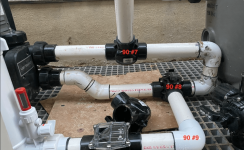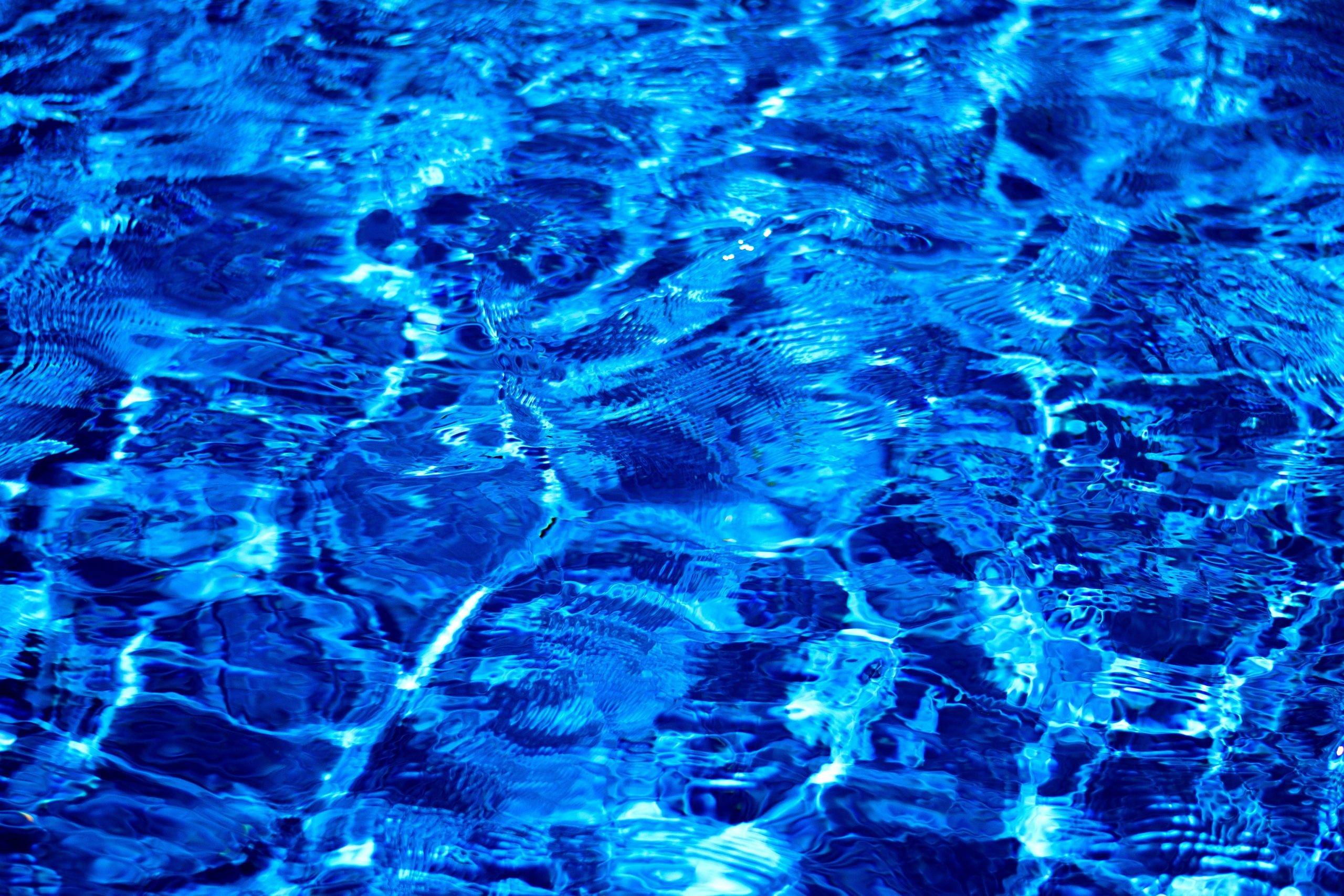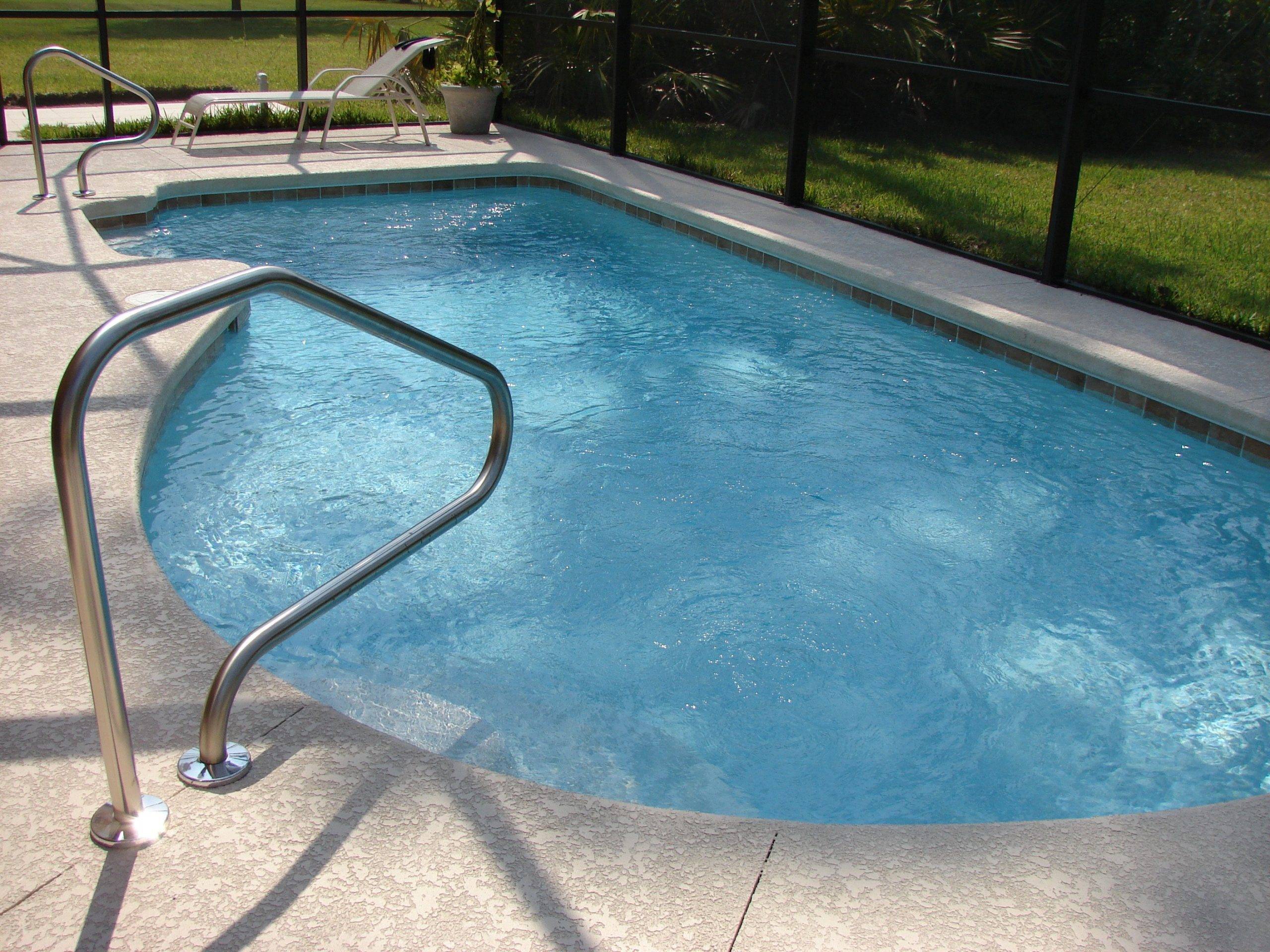My builder just started plumbing the equipment pad and I'm concerned about how many tight 90 degree turns are in the normal flow. I see 9 and counting: 3 from the pump output to the filter input, 6 from the filter output to the chlorinator, and I expect a few more are needed to get to the returns.
Is this good or bad? Should I ask the builder to change it?
It looks overly restrictive to me and doesn't look like the Jandy reference image attached.
I was expecting something like the Jandy reference with one 90 sweep from pump to filter, one 90 sweep from filter to heater, and maybe two 90 sweeps out of the heater. I like the 3-way bypasses the builder added but I expected them to be installed so normal flow goes straight through them and they only turn the flow 90 when used to bypass something. I tried to show that in the attached revised.jpg
Is this good or bad? Should I ask the builder to change it?
It looks overly restrictive to me and doesn't look like the Jandy reference image attached.
I was expecting something like the Jandy reference with one 90 sweep from pump to filter, one 90 sweep from filter to heater, and maybe two 90 sweeps out of the heater. I like the 3-way bypasses the builder added but I expected them to be installed so normal flow goes straight through them and they only turn the flow 90 when used to bypass something. I tried to show that in the attached revised.jpg
Attachments
Last edited:











